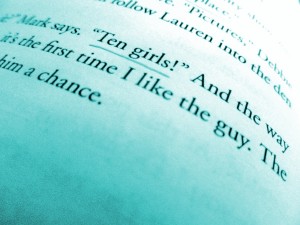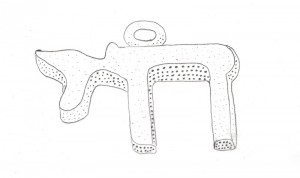Last summer, a snigger went viral in the Jewish online community when an eBay entrepreneur posted a pendant of a Navajo moose. Labeled a “Unique Vintage Navajo Moose 925 Sterling Silver Pendant, marking 0.8 grams,” the trinket for sale was in fact a Jewish amulet depicting the Hebrew word “chai” for “life/living.” The motif is popular in Jewish jewelry. It consists of the two letters chet and yod and is not commonly mistaken for an animal. But this particular example simplified the letters and joined them together, which made them appear, quite truly, like an antlered moose in Native American style. → continue reading
The Involuntary Moose and Other Metamorphoses
New Forms of Protest
Last summer, the Korean musician PSY sang out in protest against consumerism in Gangnam, a posh district in Seoul. His video shows him dancing, as if on a horse, in front of wealthy-looking men and scantily-clad women. For reasons only posterity may help us to understand, Gangnam Style became Youtube’s most frequently watched video clip.
A series of parodies were produced by groups as far distant from Gangnam – geographically and ideologically – as NASA and Greenpeace.
Gangnam-style protest reached the art world with particular fervour. Chinese activist Ai Weiwei released a Gangnam Style video in protest of censorship in his country.
Reacting to this video, Jewish-Indian artist Anish Kapoor – whose works are on display starting 18 May 2013 at the Martin-Gropius-Bau, Berlin – animated art museums in England and the USA to shoot a video in support of Ai Weiwei.
Shortly thereafter, the Philadelphia Art Museum posted a video with its staff members dancing to the Gangnam tune, though their object of contention is not immediately apparent:
Reconsidering What We Talk About When We Talk About Anne Frank
 In the past, a number of literary texts on Jewish topics contributed to Jewish culture in various ways. Some documented and revitalized oral history and folk tales in an attempt to save them from oblivion (e.g. Martin Buber’s Tale of the Hasidim); others made Jewish topics palatable to the majority society (e.g. Sidney Taylor’s All-of-a-Kind Family); and still others helped to build a Jewish community around shared experiences of ritual, emigration and persecution (e.g. Friedrich Torberg’s Tante Jolesch or The Decline of the West in Anecdotes).
In the past, a number of literary texts on Jewish topics contributed to Jewish culture in various ways. Some documented and revitalized oral history and folk tales in an attempt to save them from oblivion (e.g. Martin Buber’s Tale of the Hasidim); others made Jewish topics palatable to the majority society (e.g. Sidney Taylor’s All-of-a-Kind Family); and still others helped to build a Jewish community around shared experiences of ritual, emigration and persecution (e.g. Friedrich Torberg’s Tante Jolesch or The Decline of the West in Anecdotes).
Nathan Englander, one of the most sophisticated and provocative current writers, shares none of these intentions. His latest book, What We Talk About When We Talk About Anne Frank, is a collection of eight short stories loosely bound together under the title of (and a quote from) the first story, arising from a heated conversation about genocide; it refers to Anne Frank not as a historical figure, but as a metonym of victimhood. Accordingly, the stories reflect on the effect of Jewish themes, such as religion, the Holocaust and Israel, on modern Jewish identities. The author’s perspective is from within – he was born in 1970 to an Orthodox-Jewish family in New York – and critical. His gripping, intimate theatre-like episodes are fraught with tense dialog questioning the validity of Jewish cultural practice: → continue reading
